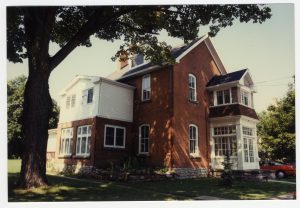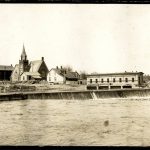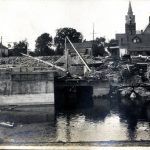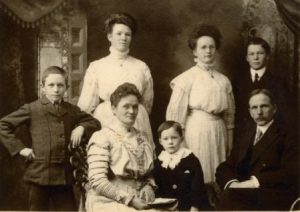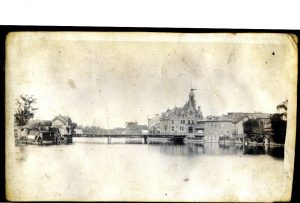The Brown Family
The Brown family arrived in Carleton Place in 1870 when Roy’s grandfather, Horace Brown (1829-1891) moved to town from nearby Lanark Village. He bought and expanded the old Boulton Mill into a four-story structure using the new roller process to grind flour.
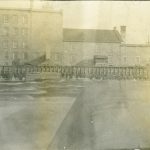
The Mississippi River flowing over James Morton Brown’s hydroelectric dam, with the Brown’s flour mill in the background.
The year 1870 saw the settlement of Carleton Place incorporated as a village. An industrial and housing boom was underway, aided by the new Gillies and McLaren sawmill just across the Mississippi river from Brown’s flour mill.
Horace’s son James Morton (1863-1926) later took over operation of the flour mill and began to generate electricity using the water power of the river, a power generation business that ran for over 30 years.
James Morton was a prominent figure in Carleton Place, serving as a town councillor, public school trustee, Zion Presbyterian church treasurer and public utilities commissioner.
James Morton married Mary Elizabeth Flett in 1886 and together they had five children: Margaret, Elizabeth, Roy, Horace and Howard.


